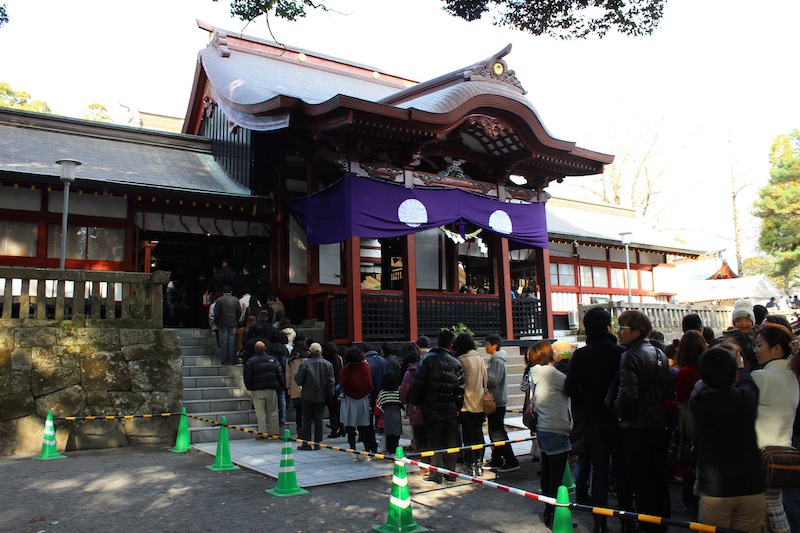2014.01.03
Japanese New Year Festival

Happy New Year! SAKURAJIMA wish everyone a wonderful year full of happiness, good health and success!
Japanese New Year Festival is the longest holiday of the year starting from December 29 to January 3 of every year. Most people will take their family back to their hometown. The New Year period is the time when Japanese people will worship the deities of the year “Toshigami” (年神)which consist of the god of crops and the spirits of the ancestors who protect them.
Before the New Year Festival, all families, shops and companies will clean their houses, shops and offices. They will decorate their front doors with “Kadomatsu” (門松) or bamboo tubes decorated with pine leaves. “Shimekazari” (しめ飾り) which is decorated with fern leaves will be put on the doors to invite the deities of the year to visit their houses for prosperity and good luck throughout the year. They will also offer sticky rice balls called “Kagami Mochi” (鏡もち) to the gods of the year who come to their houses for a visit. Every decoration has a meaning.
Before the New Year arrives, ever household will prepare ingredients for cooking called “Osechi Ryori”(お節料理)by choosing the ingredients which have lucky names and shapes to cook foods and put them in boxes to be eaten during the first few days of the New Year Festival so that the maids and cooks will be able to take a rest. They are the types of foods which do not need to be heated up and can be kept for many days.
The foods that they put in the boxes are, for example, “Nishime” (煮しめ) or many types of vegetable heads boiled together which signify family members living together peacefully and happily, “shrimp” (エビ)which means living a long life until the back turns crooked like shrimp, “black bean” (黒豆)which means good health, “Kazunoko” (数の子)or yellow herring roe which is densely packed with tiny eggs that means fertility, “Kuri Kinton” (栗きんとん)or golden mashed chestnuts which means wealth throughout the year, etc.
On December 31 or the last day of the year, Japanese people will eat a type of soba called “Toshikoshi Soba”(年越しそば)which is believed to contribute to longevity just like soba noodle which is thin and long. On the New Year’s Day, Japanese people will eat “Osechi Ryori” that they have prepared earlier with sake and “Ozoni” (お雑煮)or Mochi soup which is offered to the gods of the year since they believe that eating the Mochi (餅)which has been offered to the gods will give them power and luck.
On the first day of New Year, most Japanese people will go to Shinto Temple (神社)to seek blessings from the temple’s gods who will protect them from harm. They will ask the temple’s gods for a good and happy year.
Another important thing is that, in the morning of the New Year’s Day, children will be excited to get “Otoshidama” (お年玉)or money in an envelope that adults prepare for them on the New Year’s Day.
Actually, Japanese New Year is similar to Thai New Year or Songkran Festival which is the time when most Thai people come back to their hometown to visit their parents, clean their houses, prepare foods to make merit at temples, wash Buddha statues and spend time relaxing with their family. Also, “Otoshidama” that is given to children is exactly like Chinese “Angpao”.



















